February!
The last of the winter mornings and the beginning of fall.
Tiger on the Road!
by Animesh Manna
It was an evening safari when one of the vehicles spotted a leopard with a kill in some well placed rocks. We reached there but only managed to get some glimpse of the leopard through the bushes, but the next morning when we arrived at the spot full of expectation, we were taken by surprise; the kill had been taken over by two sub-adult tigers. Through the thickets of zizyphus climbers we could see that one of them was dragging the Sambar kill. After a long wait, the flies finally coaxed one of the Tigers to walk out of the bushes and onto the main road, he settled himself on the road, slightly wary of the humans buzzing but blissfully free from the flies.
Experiencing the fluidity of “Time”
by Maya Jindal – Forsyth Guest
My experience at Forsyth Lodge was a whirlwind of unexpected surprises. From our arrival, I was unaware of the lack of phone service I was walking into, which turned out to be the shaper of my fabulous experience at Satpura National Park- I was living and learning in the moment, with absolutely no thought of the chaos of the life I was to go back to. The naturalists played a huge role in this- from meticulously planning unique forms of transportation around the park, to educating us on the species of birds, plants and animals around us, to encouraging us to pay attention to the language of the jungle.
Forsyth lodge offered a hands on, unique approach to appreciating nature. I didn’t even know what I was getting into until I arrived at the lodge. Every team member at Forsyth helped in making my experience as educational, luxurious and enjoyable as possible. While I walked out feeling all three of these things – I also returned with a newfound understanding of time.
In the park, time was how long we walked for, how many birds we saw, which animals called out to us. Time was when the sun moved from a peak in the sky to the edge of the horizon. Time was spent looking at a sky full of stars from the Macchan on a cliff. Time was the distance between a Sambar warning call and our jeeps sharp turn towards the noise. Time was the forest telling us it’s time to go (well maybe this was based on restrictions from the forest department). While “time” came back when we made our departure from Forsyth lodge, so did my understanding of how malleable time is based on our own choices. For the flora and fauna of the forest, time is a natural passing feature based on physiological needs- hunger, sleep, thirst, mating. For humans, we have complicated our sense of timing to the point of depression, to numbers, to restriction.
Take a step back. Expand your time- it makes all the difference.
Flowers of the Firebush
by Animesh Manna
As the temperature rises and we transit into spring, plants give us indications that the change of seasons is here. Some plants like this most flamboyant Fire Flame Bush (Woodfordia fruticosa), one of the indicators of spring in the Central Indian landscape, announce the change of seasons through dual
means. The plant as its name implies becomes laden with bright red blooms that attract small nectaring birds and these birds carry the yellow-orange powdery pollen on their foreheads announcing to us humans without the noses for nectar that the firebush is in bloom. February end to March is its peak season for the flowering. It’s reddish- orange tube like flowers are densely packed in a brunch. Different species of butterflies, bees, and birds like the Sunbirds, Flowerpeckers, Leafbirds, Indian White-eyes are frequent visitors of Fire Flame Bush.
The liminal qualities of February
by Saee Gundawar
As February wanes, so do the foggy misty mornings and the cold breeze of the day. The leaves are turning yellow across the landscape, maybe a little later than they normally do, but the trees know their timeline well; the buds are already appearing on the Mahua, the Palash, and the Red silk cotton has opened an odd few flowers; some like the mango and the Chironji, are already in full bloom and attract quite a buzzing following as the weather warms in the afternoons.
The water from the dam release is making more and more mud banks appear, the multitudes of plovers, terns, geese, and pratincoles are decorating the riverine landscape with their calls and displays. The larks are singing in loud voices to serenade their mates as the lone spotted deer stag brays his last mating calls for the season.
As the weather becomes this beautiful mix of fall and spring and winter and summer, so many places to have breakfast with a view open up, just as farm fresh produce peaks and we have an amazing and dizzying array of beans, cabbage, tomatoes, eggplants, and green leafy veggies to chow down on. The local women come and make delicious food that we all enjoy under the dappled shade of tee Mahua tree. It is just warm enough to have some summer coolers and cool enough to enjoy the bonfire with a drink.
The whole Landscape enjoys this beautiful liminal period that is February, in the central Indian jungles of Satpura Tiger Reserve. It is a wonderful time to walk across the meadows and streams that cut across this landscape, soaking in the love that saturates this place and the golden sunlight that shines on everything making it bright.
Tree of the Month – Palash
by Saee Gundawar
February this year was unusually warm, the Palash tree or flame of the forest took this as a sign and set itself on fire! The landscape looked wonderous with the bright flames of the flowers, which in reality look nothing like the illustrated versions of flowers that were taught to us in school. The bloom is stunning,
the petals curving upwards like fingers of flame, cupping sweet nectar in them that is absolutely irresistible to a number of species including birds like Chestnut Tailed starlings and mammals like the langurs.
Sitting in the verandah of the lodge, we would happily remain busy watching as the many different denizens of our small patch of forest made their way to consume these tempting bright morsels of food.

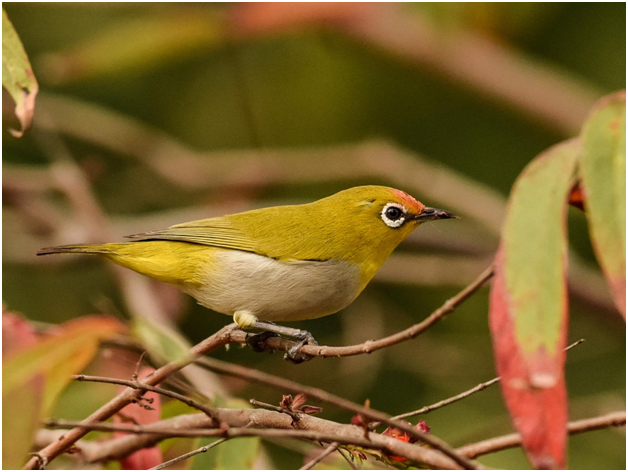
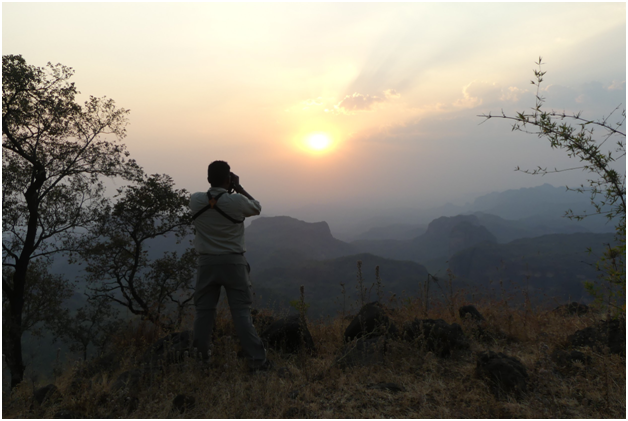
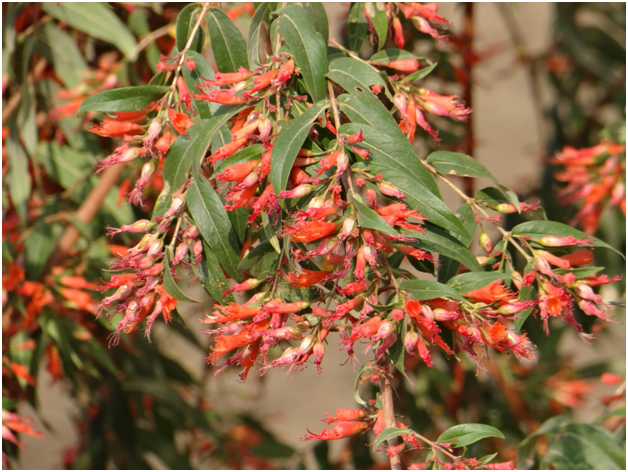
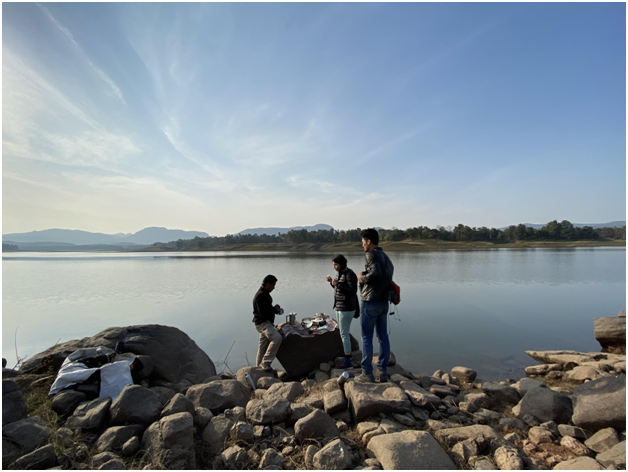
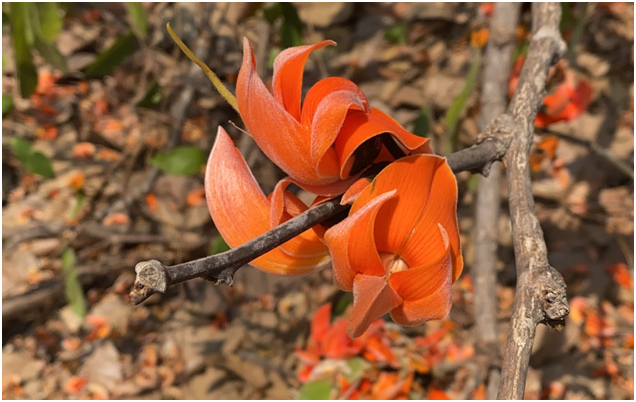

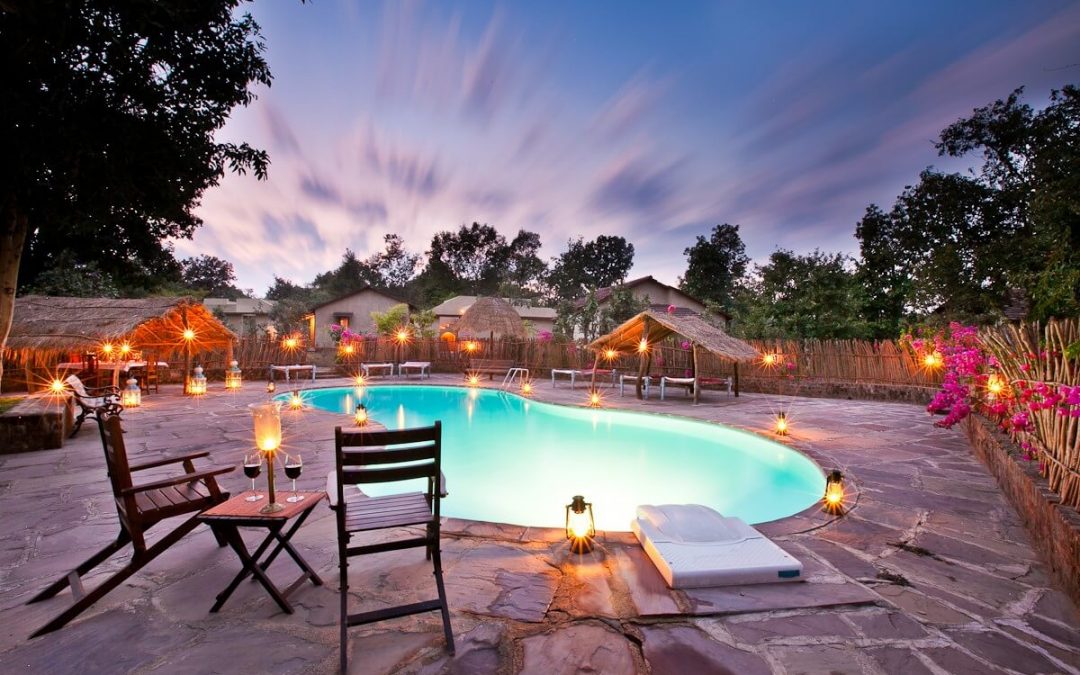
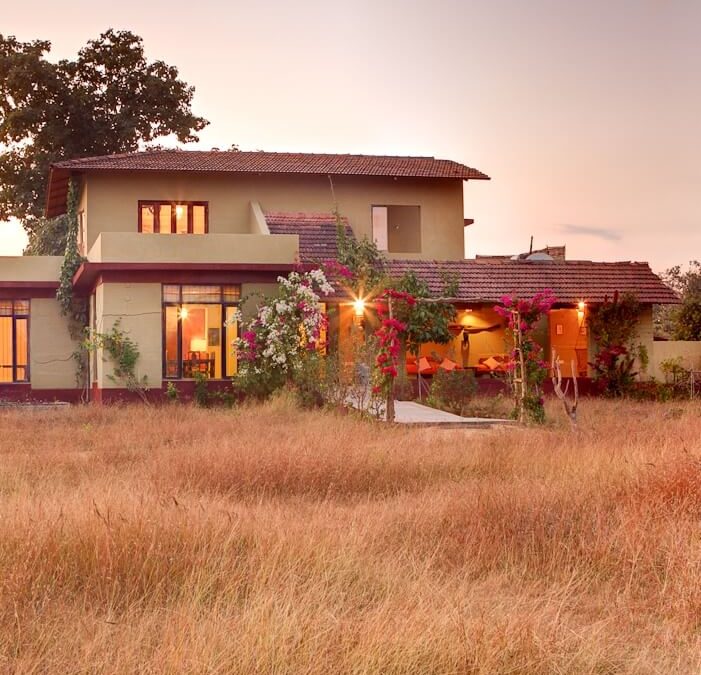
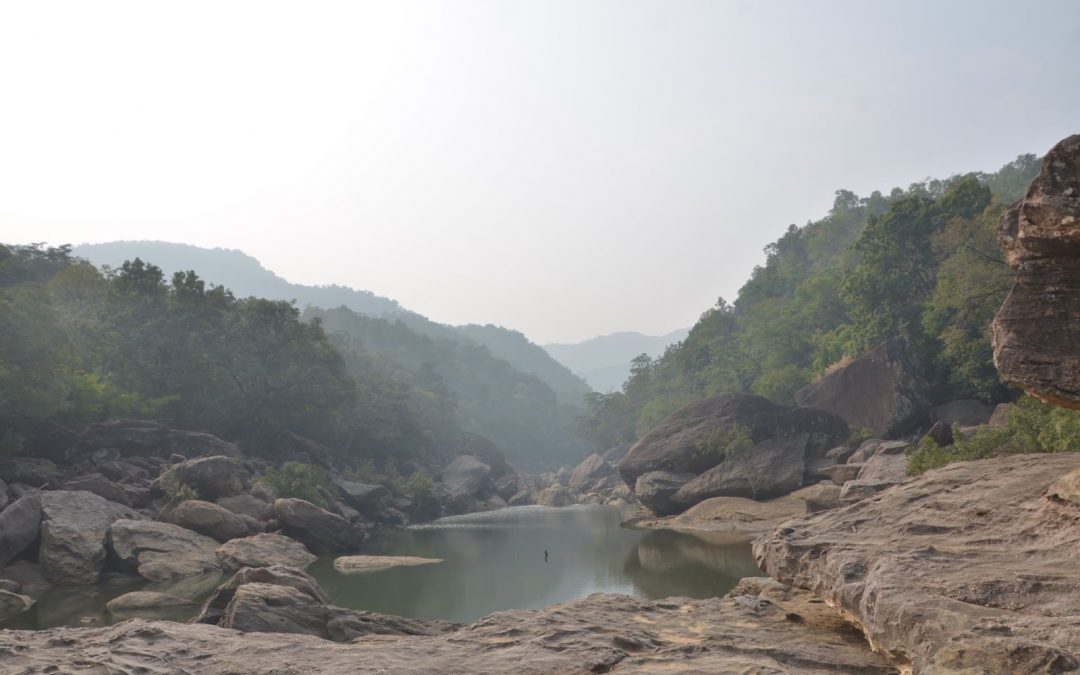

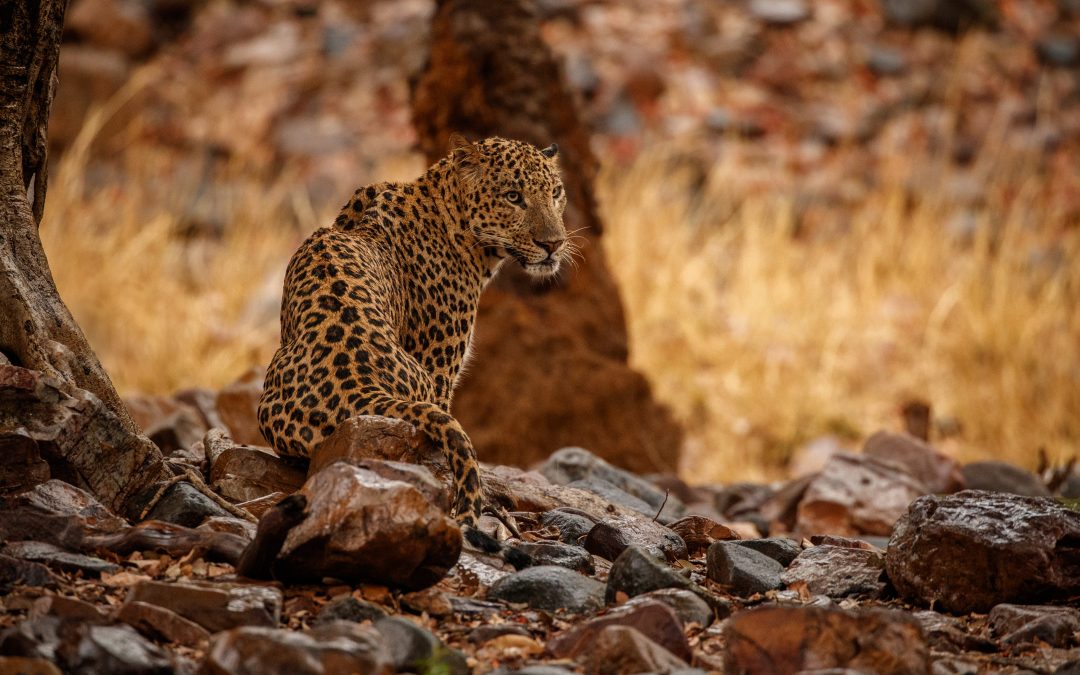
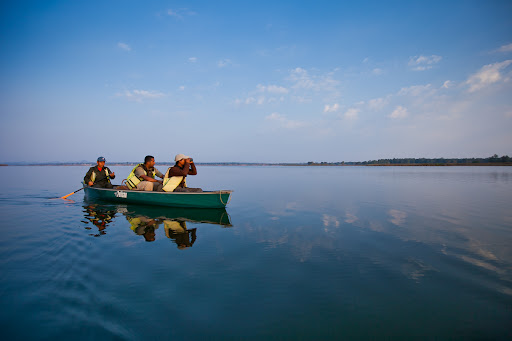
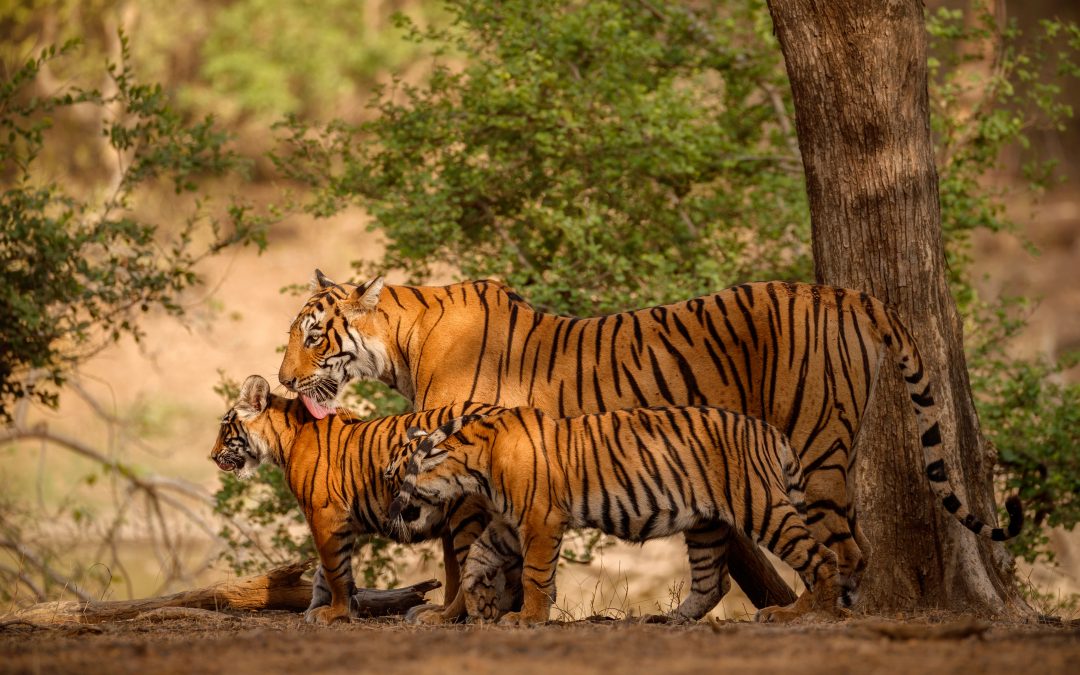
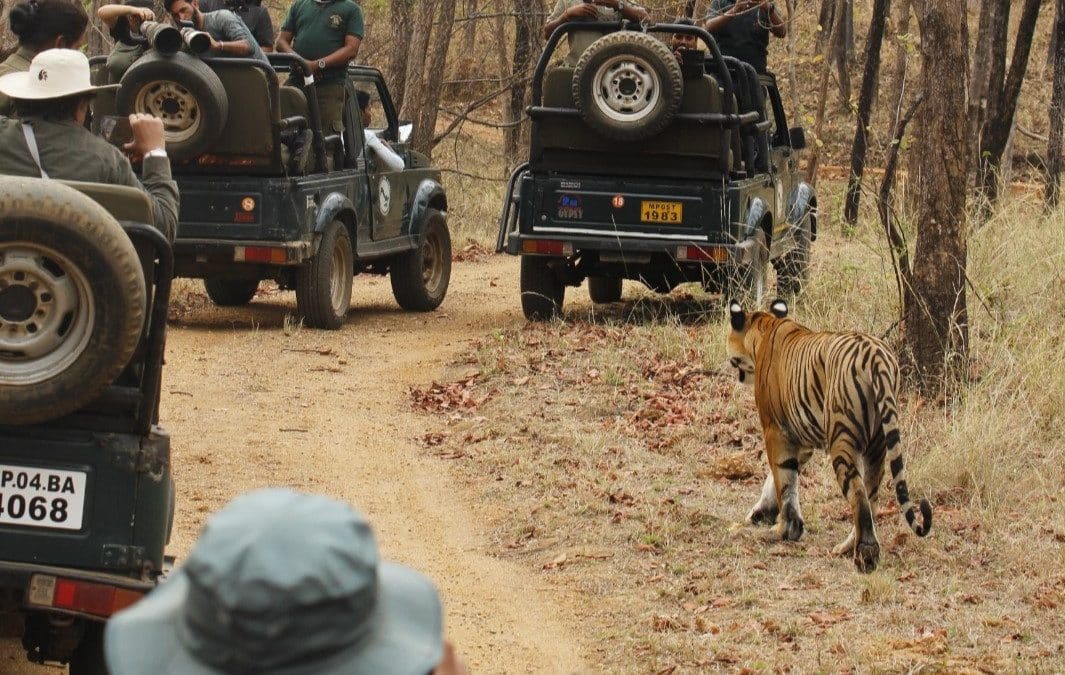
Recent Comments